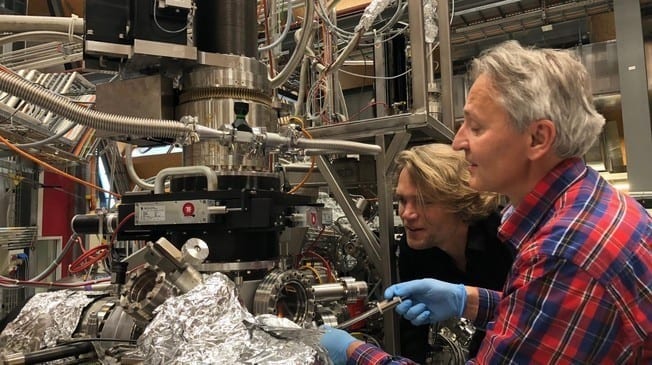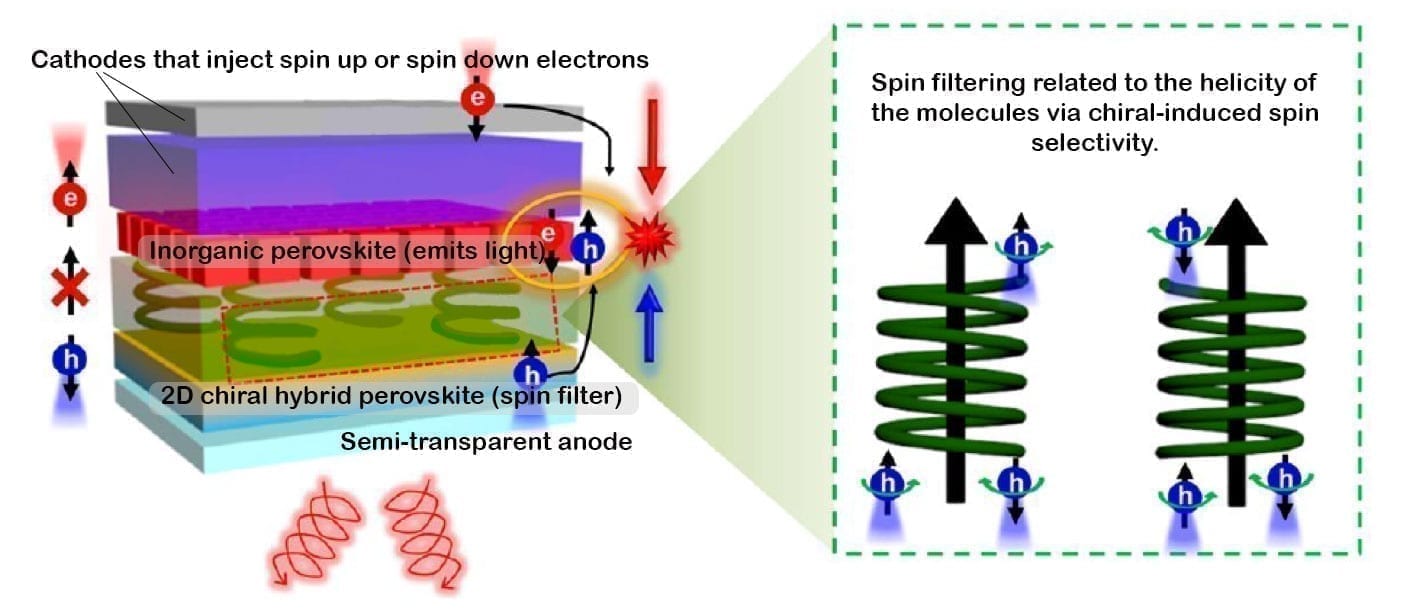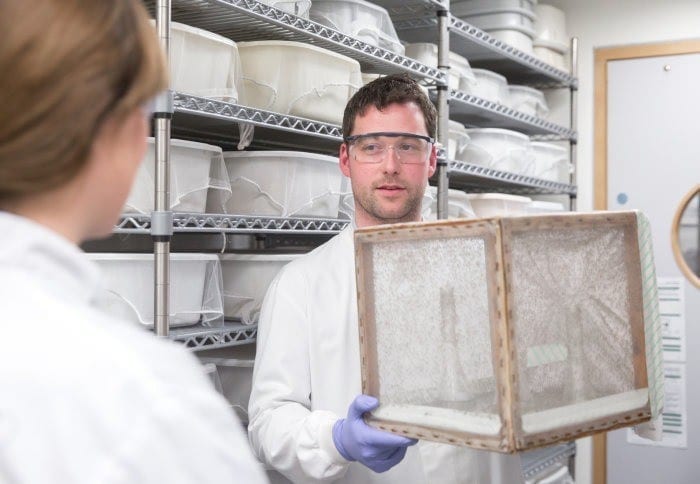
EPFL physicists have found a way to reverse electron spins using electric fields for the first time, paving the way for programmable spintronics technologies.
Spintronics is a field of physics that studies the spin of electrons, an intrinsic type of magnetism that many elementary particles have. The field of spintronics has given rise to technological concepts of “spintronic devices”, which would run on electron spins, rather than their charge, used by traditional electronics.
In order to build programmable spintronic devices we first need to be able to manipulate spins in certain materials. So far, this has been done with magnetic fields, which are not easy to integrate into everyday applications.
In a new set of experiments, an international team of physicists led by Hugo Dil at EPFL have now demonstrated the ability to control what they call “the spin landscape” using electric fields. They accomplished this in a new class of materials based on germanium telluride (GeTe), which is the simplest ferroelectric material operating at room temperature.
The scientists used a technique called spin- and angle-resolved photoemission spectroscopy (SARPES), which can measure the spin of electrons, and has been perfected by Dil’s lab. By combining SARPES with the possibility to apply an electric field, the physicists demonstrate electrostatic spin manipulation in ferroelectric ?-GeTe and multiferroic (GeMn)Te.
In addition, the scientists were able to follow the spins’ switching pathway in detail. In (GeMn)Te, the perpendicular spin component switches due to electric-field-induced magnetization reversal. This provides firm evidence of magneto-electric coupling, which opens up the possibility of programmable semiconductor based spintronics.
“Our previous work showed that magnetic fields can control spins in these materials,” says Dil. “And now we’ve shown that spin manipulation is also possible using electric fields. Our experimental findings open up a promising path to only use electric fields in a spintronics device, strongly reducing the energy consumption.”
Learn more: Spintronics: Controlling magnetic spin with electric fields
The Latest on: Programmable spintronics
[google_news title=”” keyword=”programmable spintronics” num_posts=”10″ blurb_length=”0″ show_thumb=”left”]
via Google News
The Latest on: Programmable spintronics
- Here’s Everything You Need To Know About Spintronicson April 23, 2024 at 5:00 pm
Spintronics, also known as spin electronics, is a rapidly developing field that explores the potential of utilising the spin of electrons in solid-state devices. Spin is one of the three ...
- Spintronics research shows material's magnetic properties can predict how a spin current changes with temperatureon April 22, 2024 at 4:59 pm
Spintronics is a field garnering immense attention for its range of potential advantages for conventional electronics. These include reducing power consumption, high-speed operation, non ...
- Unlocking spin current secrets: A new milestone in spintronicson April 22, 2024 at 4:59 pm
The finding is a major breakthrough in the field of spintronics. Spintronics is a field garnering immense attention for its range of potential advantages for conventional electronics. These ...
- How Much Does It Cost To Install A Thermostat?on April 18, 2024 at 4:33 am
Installing one thermostat will be less expensive than installing multiple units. For manual and programmable thermostats, multiple units must be installed for zoning. With smart thermostats ...
- Spintronics: A new path to room temperature swirling spin textureson April 16, 2024 at 5:01 pm
Examples of such structures are magnetic bubbles, skyrmions, and magnetic vortices. Spintronics aims to make use of such tiny magnetic structures to store data or perform logic operations with ...
- Spintronics Using Altermagnets and Antiferromagnetson April 8, 2024 at 5:00 pm
The field of spintronics has, so far, focused on magnetic systems with uncompensated order, i.e. ferromagnets and ferrimagnets. Both these systems can be easily studied using conventional ...
- Programmable Logic II – CPLon June 25, 2014 at 12:07 am
There is a wide assortment of cheap development (dev) boards for Complex Programmable Logic Devices (CPLD), the smaller cousin of the Field Programmable Logic Array (FPLA) Using an inexpensive ...
- Simple To Build Programmable Foot Switcheson February 26, 2013 at 6:09 pm
Your hands do a lot of work between the keyboard and the mouse, why the heck are you letting your feet be so lazy? [Dossier van D.] is putting an end to the podiatric sloth. He built this set of ...
via Bing News










